Search
Search Results

Definition
Constantine V
Constantine V, also known as Constantine the Dung-named by his enemies, was emperor of the Byzantine empire from 741 to 775 CE. He enjoyed military successes in the Middle East and Balkans but his reign is chiefly remembered for his systematic...
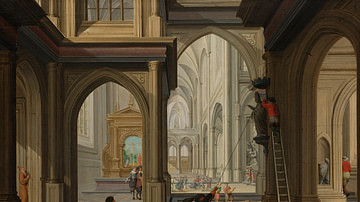
Article
Reformation in the Netherlands & the Eighty Years' War
The Protestant Reformation in the Netherlands was among the most violent and destructive of any region during the first 50 years of the movement, ultimately informing the Eighty Years' War (1568-1648), but causing massive destruction and...

Image
Icon of Christ Pantokrator
This icon was painted on wood in Constantinople in the second quarter of the 15th century CE during the waning days of the Byzantine Empire. It was likely made at one of the imperial workshops, and it depicts Jesus Christ as the "Pantokrator."...

Definition
Charlemagne
Charlemagne (Charles the Great, also known as Charles I, l. 742-814) was King of the Franks (r. 768-814), King of the Franks and Lombards (r. 774-814), and Holy Roman Emperor (r. 800-814). He is among the best-known and most influential figures...

Definition
Constantinople
Built in the seventh century BCE, the ancient city of Byzantium proved to be a valuable city for both the Greeks and Romans. Because it lay on the European side of the Strait of Bosporus, the Emperor Constantine understood its strategic importance...

Definition
Byzantine Art
Byzantine art (4th - 15th century CE) is generally characterised by a move away from the naturalism of the Classical tradition towards the more abstract and universal, there is a definite preference for two-dimensional representations, and...
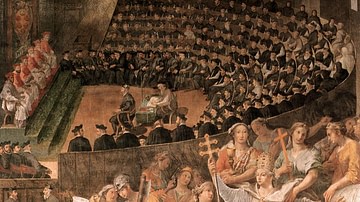
Definition
Council of Trent
The Council of Trent (1545-1563) was a meeting of Catholic clerics convened by Pope Paul III (served 1534-1549) in response to the Protestant Reformation. In three separate sessions, the council reaffirmed the authority of the Catholic Church...
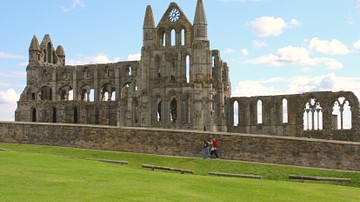
Definition
Medieval Monastery
A medieval monastery was an enclosed and sometimes remote community of monks led by an abbot who shunned worldly goods to live a simple life of prayer and devotion. Christian monasteries first developed in the 4th century in Egypt and Syria...
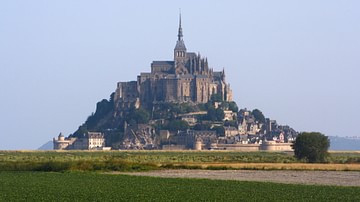
Definition
Mont-Saint-Michel
Mont-Saint-Michel is the name of a tidal island located off the coasts of Normandy and Brittany, near the mouths of the Couesnon River and the town of Avranches in France. While the island of Mont-Saint-Michel has held cultural, religious...
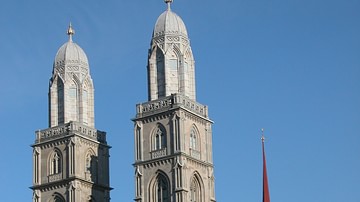
Definition
Grossmunster
Grossmünster (“large cathedral” in German) is a Romanesque ex-cathedral situated in the heart of Zürich, Switzerland, which was built over the course of the 11th and 13th centuries CE. According to legend, the Holy Roman Emperor Charlemagne...